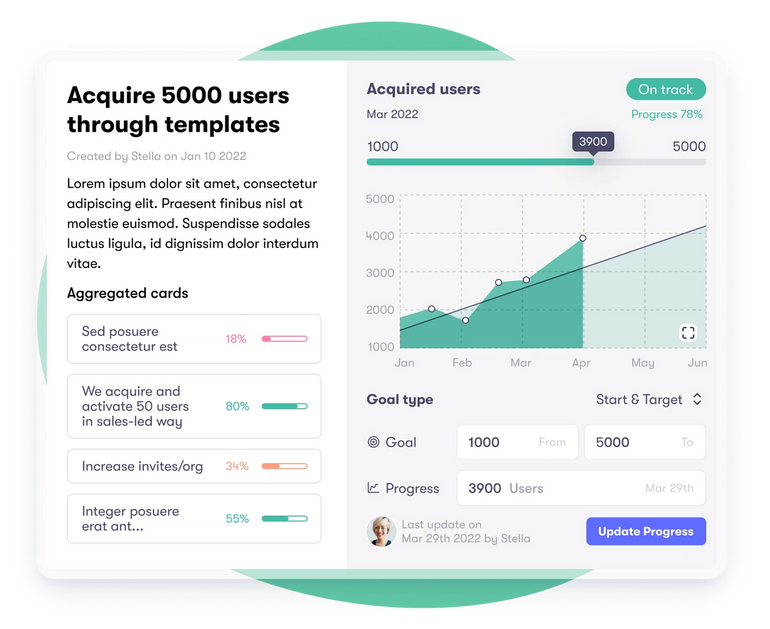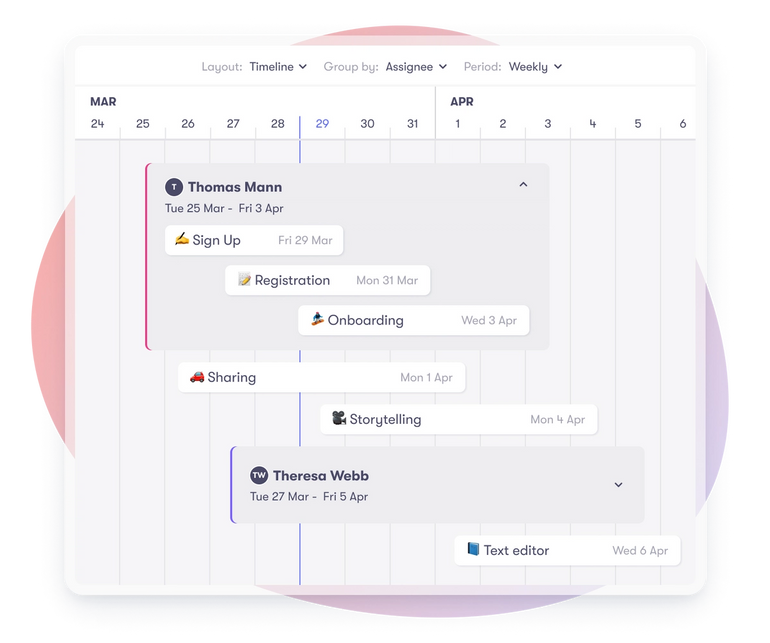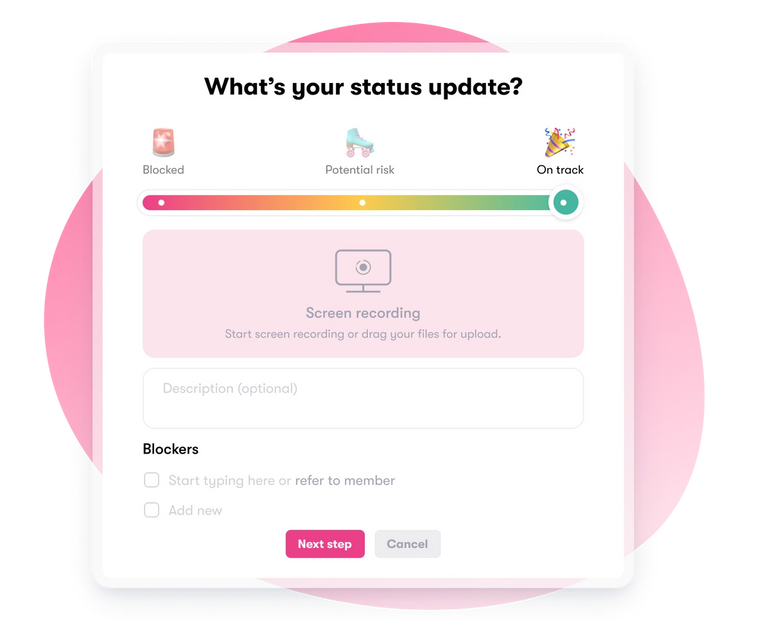Tracking OKRs has never been easier
OKRs work best when they’re kept front and center of daily business. It’s an all-too-common mistake for OKRs to be added to a spreadsheet only seen and updated by a few individuals. This lack of visibility can lead to misalignment and decreased focus on company priorities.
OKRs is more than a goal-setting process. Objectives and key results help teams evaluate what tasks or procedures are working (or not) towards organizational goals. Tracking OKRs allows you to quickly make adjustments so that your team continues to work towards driving results.
🍦New to OKRs? We’ve got you covered.
What is OKR tracking?
OKR tracking is a method of reviewing set objectives and key results. Usually, it’s done in a weekly OKR check-in where teams share progress or roadblocks to keep track of upcoming plans.
What are the benefits of tracking OKRs?
Provides visual progress - Keeping tabs on OKRs help leaders align teams. If a task appears off track, you can see what needs to be done to steer the project back in the right direction. That way, everyday endeavors are in line with company objectives.
Makes employees happy - When progress is displayed and discussed, employees have proof that their daily work contributes to the bigger picture. In a recent study, 92% of 1000 U.S. adults said they would be more motivated to reach their goals if colleagues could see their progress. Tracking OKRs leads to employees feeling motivated, engaged, and supported in the workplace.
Guides future goals - If you track progress and setbacks throughout the quarter, it means you’ve collected data on what works and what doesn’t. You can use this information to form your next set of OKRs to keep progressing forward.
How to track OKRs
Once your OKRs are agreed upon and written down, you need to make the hierarchy of goals, key results, and initiatives clear and visible to the entire company. The simplest way to do this is with OKR software, such as Collato, which showcases OKRs in a way that’s easy to understand and shows the progress of each goal.
Here’s how to track your OKRs, step by step:
1. Create powerful objectives and key results
When writing your objectives and key results, ensure that your objectives are qualitative, meaning they identify qualities your company aims to achieve. For example, an objective could be “Launch a new market-disrupting product.” You should be able to say either, “Yes, we achieved our objective,” or “No, we failed to achieve our objective.” You cannot measure the achievement of an objective by percentage.
When creating key results, make sure they are quantifiable so you can measure exact progress. Your key result will almost always have a number in front of it. For example, your key result might be, “Increase conversion rate by 100%.” Assign percentage benchmarks for each key result to track the progress of your OKRs more precisely.
☝️If you’re using Collato to track your OKRs, you can watch the progress of key results in real-time as contributors add updates throughout the cycle. This helps highlight which initiatives are driving progress and which ones may need to be reassessed.
2. Assign owners to create accountability for initiatives
OKRs should involve the entire team, not just top executives. That means that each contributor should have a say in which initiatives they own and how they contribute to company priorities. The more involved contributors are in the OKR process, the higher the engagement and motivation will be. Make sure expectations are clearly defined at the start of the cycle so that everyone understands exactly what they will be accountable for.
3. Share OKRs with the whole company
Once OKRs have been written and initiatives assigned, the goals should be shared and made visible to the entire organization. Even if not every team contributes to every objective, it’s important to establish transparency in order to keep the company aligned. This way, everyone can clearly see goal prioritization, and resources can be allocated accordingly. This also means that stakeholders are aware of any dependencies early on and can plan ahead.
Moreover, when OKRs are shared with everyone, you can celebrate successes together as a team. Keeping goals and progress visible to everyone increases engagement and motivation, as well as encourages recognition for individual impact.
🍦Sweet tip: A part of tracking OKRs is celebrating successes. Recognition can be done in big ways, like financial compensation, or something smaller, like a LinkedIn shoutout. It’s a great way to stimulate a workplace culture that aligns with organizational objectives!
4. Update regularly with scheduled check-ins
Throughout the OKR cycle, you should have regular check-ins to see the progress towards achieving key results and how they’re advancing objectives. On Collato, you can add an update to each initiative or key result to track progress throughout the quarter. Adjust the confidence level based on how much has been achieved in the given time frame and use this to assess impact. If you’re not seeing progress midway through the cycle, it might indicate that adjustments are needed: perhaps different initiatives, more resources, or even a new key result altogether.
Remember that key results should not be used to measure performance. They’re there to clarify what does or does not drive progress. Stay agile and flexible with OKRs to pivot quickly when one approach isn’t working. By the end of the quarter, you should use the grading forecast to assess how much you think you will have achieved. Use a OKR grading scale to give your key results a score of 0.0 to 1.0.
Why track OKRs with Collato?
Why track OKRs with Collato?

Aligns your goals

Tracks progress precisely

Engages your team
Ready to start tracking your OKRs?
Ready to start tracking your OKRs?
Talk to us so we can help you start reaching your goals. No credit card required. Get started for free.





